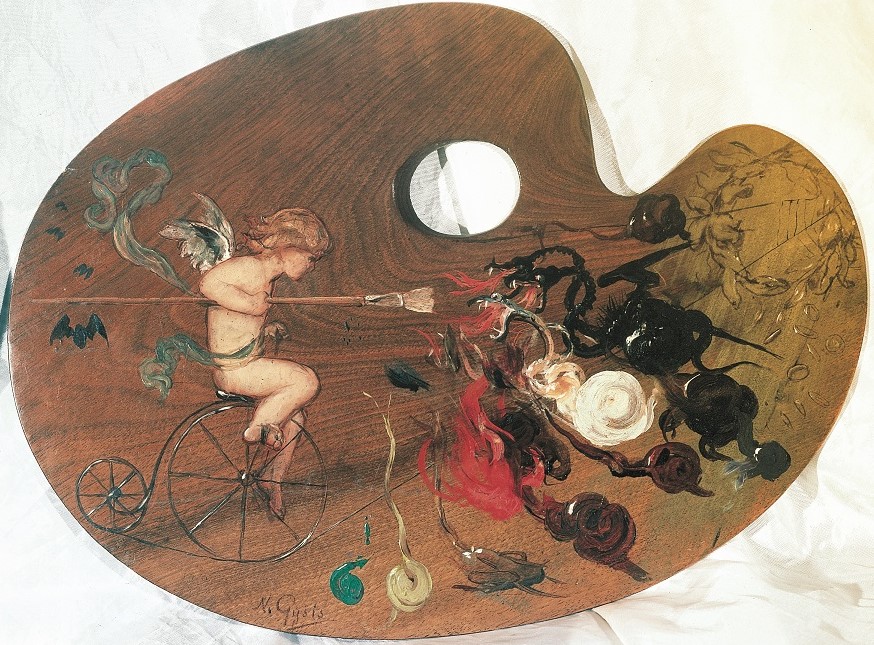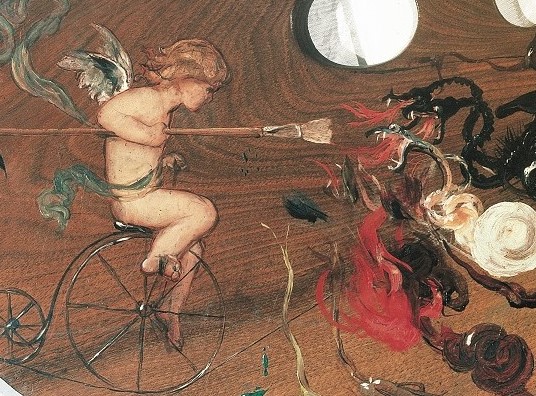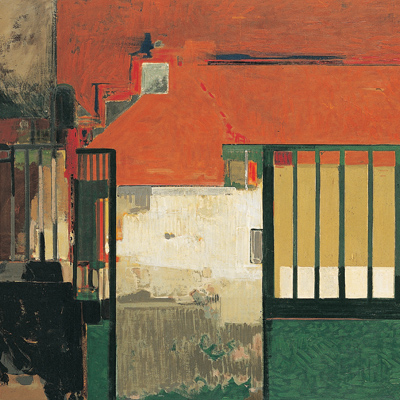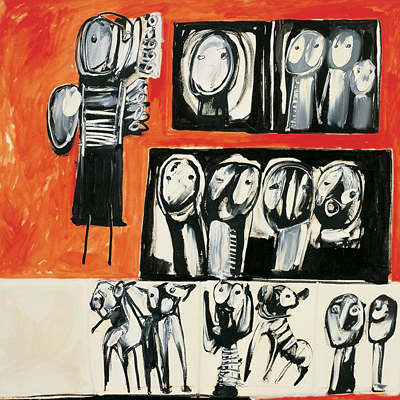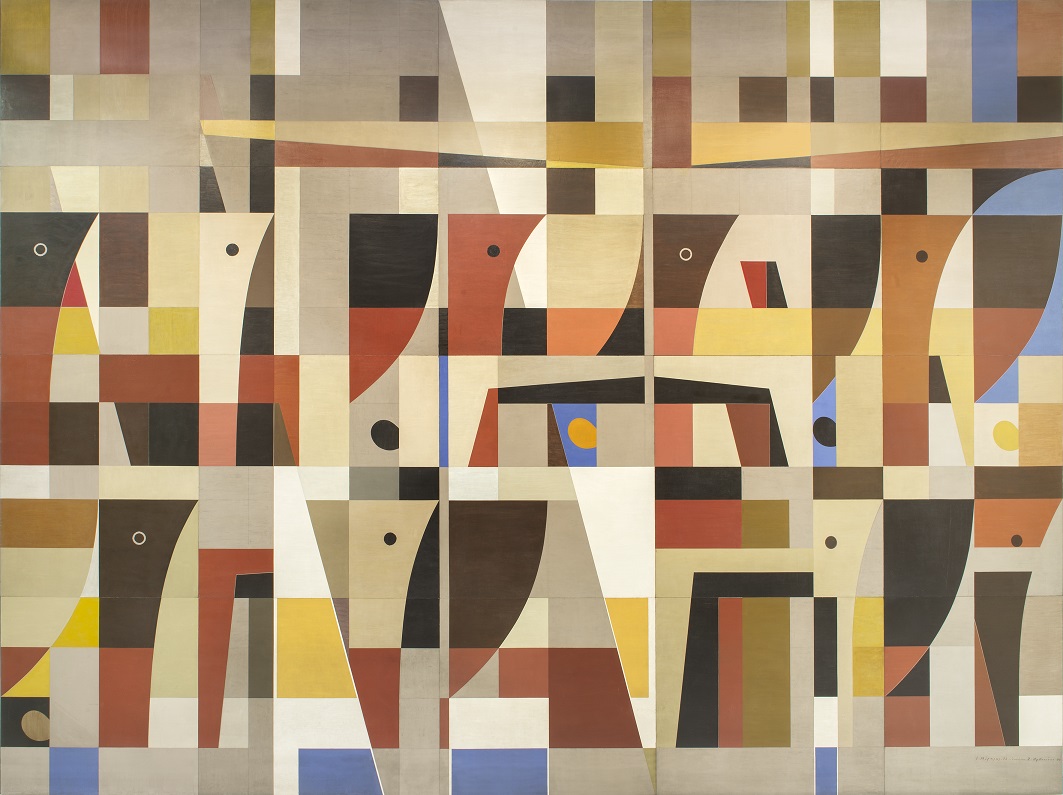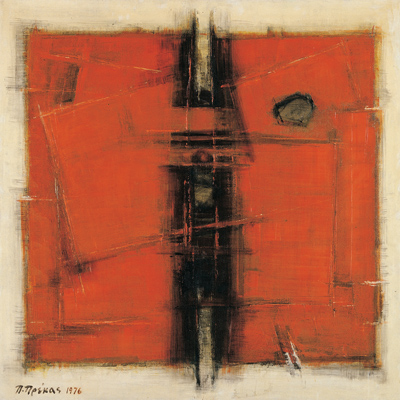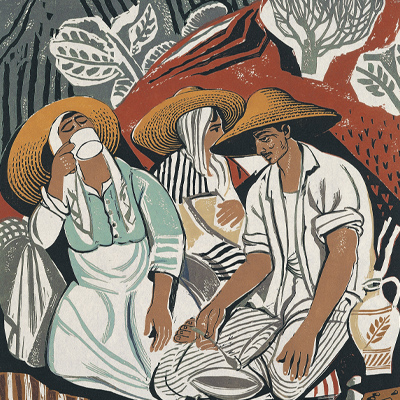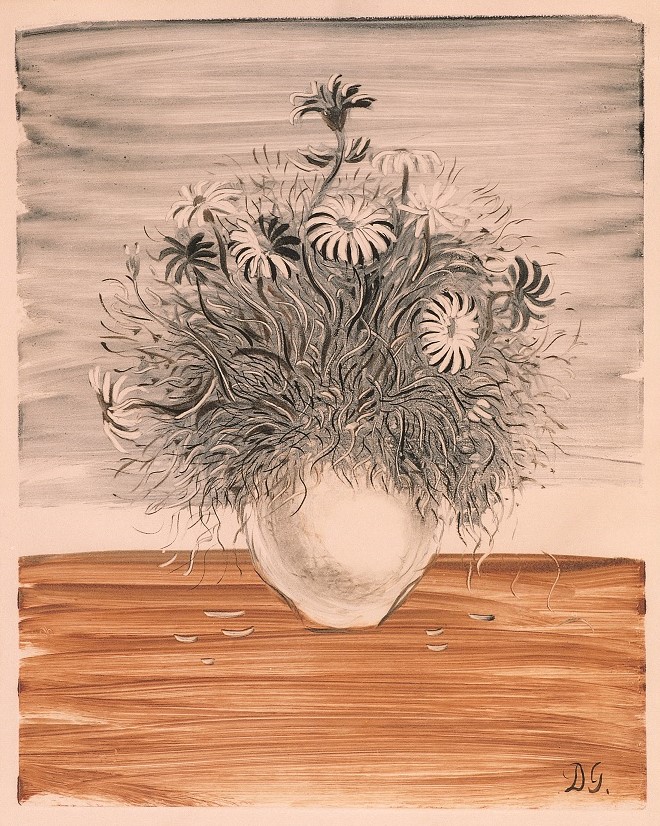Nikolaos Gyzis, Allegory of Painting
The Allegory of Painting by Nikolaos Gyzis is a small palette of the artist, depicting young god Eros. Young Eros is an iconic element of the painter’s allegoric compositions. Gyzis incorporated elements from the Munich School, symbolism and Jugendstil, and created a readily recognisable, personal style.
A special object
Nikolaos Gyzis is a very prolific artist. However, his piece Allegory of Painting is particularly interesting both as a composition and as an object.
It is a small palette of the artist, on which he painted one of his favourite themes, young god Eros.
The motif of young god Eros
Young god Eros had been an iconic element in most of Gyzis’ allegoric compositions as early as 1875.
In the Allegory of Painting, the young god is riding a bicycle and fighting dragons armed with a paintbrush. The painter created the dragons using bold colour splashes. On the other end of the composition, there is a laurel wreath on a golden background.
Expressiveness and humour
The composition stands out for the special expressiveness and skilfulness of the painter. Particularly in the rendering of young Eros’ movement and effort to fight off the colour demons.
The depiction of the young god on a modern bicycle adds a light, humorous feel to the piece.
His life in a nutshell
Nikolaos Gyzis (1842-1901) was born in Sklavochori on the island of Tinos. At a young age he studied at the School of Arts in Athens (1854-1864). In 1868 he travelled to Munich on scholarship from the Evangelistria Foundation of Tinos. In Munich he was admitted in the class of famous German painter and teacher Karl von Piloty.
In 1872 he returned to Athens where he stayed for 2 years. In 1880 he became an honorary member of the Academy of Fine Arts, in 1882 an associate professor at the Munich Academy of Fine Arts and in 1888 he became a full professor. In 1895 he made his second and final trip to Greece. He died in Munich.
Artistic influences
In Munich Gyzis studied under Hermann Anschutz and Alexander von Wagner at the Academy of Fine Arts. He was introduced to the art scene by Nikiforos Lytras, who had already settled there in 1860.
In 1873 he travelled to the East with Lytras. This journey had a decisive impact on his perspective as well as on the rendering of colour and light in his works.
Gyzis was able to incorporate a wide range of influences owing to his masterful technique and ability, and his imposing personal inspiration. From the academic realism of the Munich School to symbolism and Jugendstil (known as art nouveau in France), Gyzis managed to combine different elements and create a readily recognisable, personal idiom.
Favourite themes
Gyzis’ early works are mostly genre and still-life paintings. He then made a successful turn to allegoric themes, on which he worked during the last quarter of the 19th century.
He expressed a new spirit and emerged as a precursor of the Jugendstil, an art movement that originated in Germany in the mid-1890s. His works were marked by plant motifs and a strong decorative intent.
A prominent artist
Gyzis was a prominent figure of both the German and modern-Greek art of the 19th century.
This was owing to:
- The variety of themes in his works.
- The wide evolution of his artistic style.
- The ability to go beyond simple narration in his ethographic paintings.
By 1888 Gyzis had received numerous accolades from his participation in exhibitions. The most important one was the 3rd prize in the Paris World Fair in 1878, where he participated in the German section.
In 1879 he was a member of the judges panel at the International Exhibition of Fine Arts in Munich. In 1892 he won gold medals at the International Exhibition of Fine Arts in Munich and Madrid.
In 1901, after his death, a posthumous exhibition was held at the Glaspalast in honour of Nikolaos Gyzis and the late Wilhelm Leibl and Arnold Bocklin.
The work of art in our publications
The Allegory of Painting by Nikolaos Gyzis is featured in the publication The Alpha Bank Collection. Paintings – Prints – Sculptures, edited by Irene Orati. The publication marks the 125th anniversary of Alpha Bank.
Buy the publication The Alpha Bank Collection. Paintings – Prints – Sculpture (only available in Greek) on the Alpha Bank e-shop.
In other literature
The Allegory of Painting by Nikolaos Gyzis is referenced in the book Gyzis by Nelli Misirli (in Greek).
The Alpha Bank Art Collection is not open to the public.
Research visits to the Art Collection can be organised upon request.
Contact us to book your visit.
